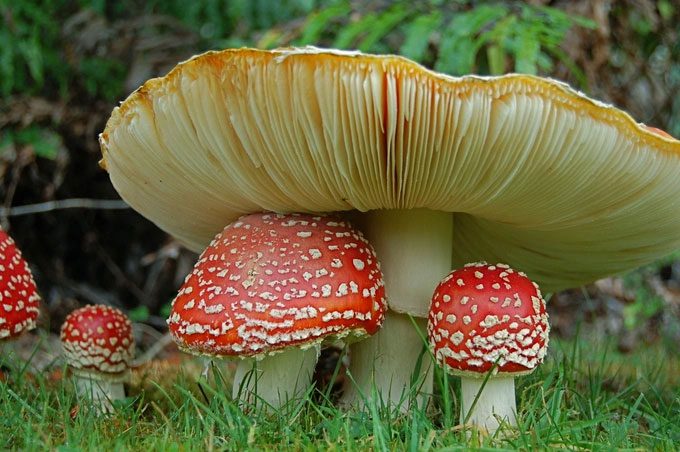Scientists have recently discovered a frightening truth about the death cap mushroom – the most dangerous fungus in the world. They can change their reproductive methods to move into new areas.
The “Death Cap” Mushroom Has a Terrifying Spread Mechanism
We know that many types of mushrooms in nature contain toxins. However, in reality, most of them are not lethal and only cause temporary discomfort if ingested. The number of mushrooms with high toxin levels that can be fatal is very low.

The death cap mushroom is spreading across North America at an alarming rate. (Photo: Getty).
Of all the reported mushroom-related deaths worldwide, 90% are attributed to an “extreme” fungus from Europe, known as the death cap mushroom (Scientific name: Amanita phalloides).
Recently, it has been reported that this fungus is spreading rapidly across various regions of North America, causing numerous fatalities in humans.
A recent study by the University of Wisconsin-Madison (USA) revealed that this mushroom can produce spores using the chromosomes of individual specimens.
This discovery is based on the gene set of 86 mushroom species, collected in California, USA since 1993, and partly in Europe since 1978.

The death cap mushroom poses a serious health threat because it is often confused with edible mushrooms. (Photo: Paul Kroeger).
The collected specimens exhibited identical genetic structures, indicating they are the same type of mushroom, and seem to have the capability to reproduce both sexually and asexually for at least 17 years, and potentially up to 30 years.
“By applying diverse reproductive strategies, the death cap mushroom can invade rapidly, similar to how animal species evolve to survive,” the study states.
Thus, utilizing sexual reproduction allows species to evolve and adapt more easily by introducing various genetic variations into the population.
However, by combining this with asexual reproduction, individual mushrooms can spread rapidly and survive independently for many years.
Specifically, when the spores of the mushroom land in a favorable environment, they will germinate and grow. In this way, asexual spores can disperse individual mushrooms far and wide without the need for mating, nor are they genetically bound.
Thanks to this evolution, the death cap mushroom originally from Northern Europe has thrived remarkably in recent decades by invading new habitats in Europe, as well as North America and Australia.
A Serious Health Threat

Toxic mushrooms are often easily identifiable by their bright colors. However, the death cap mushroom bypasses this mechanism. Moreover, it has adapted to spread rapidly. (Photo: Getty).
The alarming spread of the death cap mushroom is considered a serious risk to human and animal health.
In 2016, during a particularly severe outbreak of death cap mushrooms in San Francisco, 14 cases of mushroom poisoning occurred in humans, believed to be caused by this species.
What makes it dangerous is that this toxic mushroom resembles several edible varieties, including Caesar mushrooms and straw mushrooms. As a result, they are often confused, leading to a risk of poisoning when consumed.
Additionally, amatoxin – the type of toxin found in this mushroom is heat-resistant. Therefore, its harmful effects are not diminished when cooked.
It is estimated that only about 30 grams of the death cap mushroom is enough to kill a healthy adult.


















































